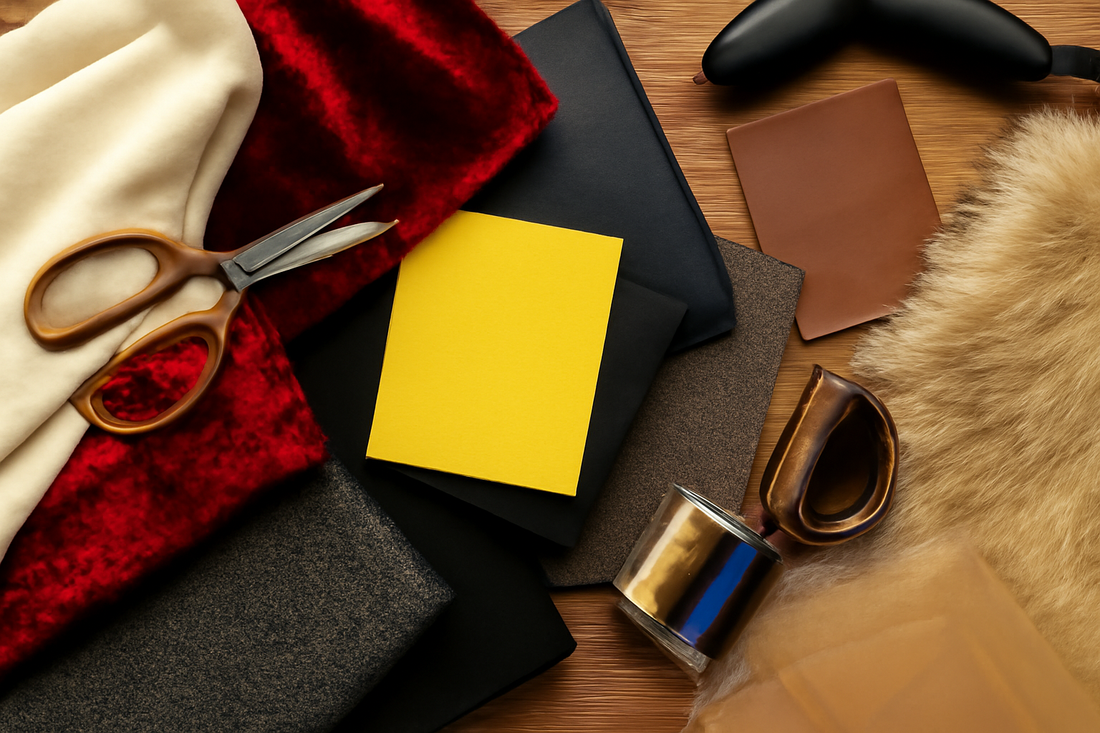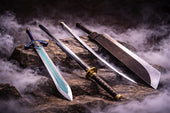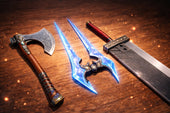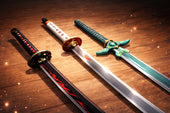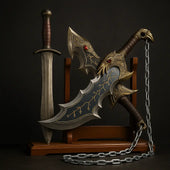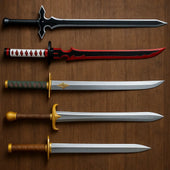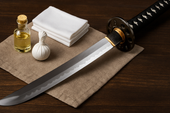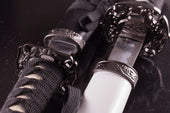Cosplay, the practice of dressing up as characters from anime, video games, movies, and comics, has grown into a global phenomenon. Whether you're attending a convention or simply showcasing your craftsmanship on social media, the key to an exceptional cosplay lies not only in the design but also in the materials you choose. The right fabric and materials will not only help you achieve a costume that looks authentic but also one that is comfortable, durable, and easy to maintain.
Choosing the right fabric and materials for cosplay is essential for both authenticity and comfort. Research your character's outfit, then select fabrics like cotton, velvet, or polyester based on their texture, durability, and movement. Don’t forget additional materials like foam and leather for accessories and props to complete your look.
In this guide, we will walk you through the essential steps for choosing the right fabrics and materials for your cosplay, from understanding your character’s attire to selecting the perfect textiles, and additional materials like foam, leather, and accessories. Let’s dive in!
Understanding Your Character
Before you even step foot in a fabric shop, it's crucial to understand your character's outfit and what materials would be most appropriate. Researching your character’s costume will ensure that you create a faithful and authentic representation.
Study the Source Material
Whether your character is from an anime series, a video game, or a movie, gather reference images from official art, cosplay pictures, and action shots. Pay close attention to the textures, patterns, and overall feel of the character’s clothing. For example, characters with armoured attire will require sturdier, more durable materials such as leather or foam, while characters dressed in flowing robes may require lighter, more fluid fabrics like satin or velvet.
Take note of any special features of the outfit, such as shiny or metallic accents, fur details, or textured elements. These will influence your material choices.
Choosing the Right Fabric for Cosplay
Once you've established a visual reference for your character, the next step is selecting the right fabric. Cosplay fabric is not just about appearance—it needs to serve a purpose.
The cosplay community is a fantastic resource for discovering the best fabrics for specific characters. Many experienced cosplayers share their material choices, the pros and cons of various fabrics, and even post detailed build logs on forums like The Replica Prop Forum. This can be an excellent place to get advice on material selection and how to approach your costume design.
Here are some popular fabric choices and their benefits for different types of costumes:
Cotton
Cotton is a versatile, breathable fabric that can be used for a wide variety of costumes. It’s easy to work with, available in different weights and weaves, and can be found in virtually any colour. It’s great for simpler costumes or casual, everyday looks. If you’re working on a character with a soft or basic design, such as a school uniform or casual attire, cotton is a go-to material.
Tip: For added texture, consider using a heavier-weight cotton, such as twill or canvas, which gives structure to the garment.
Polyester
Polyester is one of the most commonly used materials for cosplay. It is durable, easy to maintain, and holds its shape well. This fabric is often used for more structured costumes that require a bit more body, like superheroes or military uniforms. Polyester is resistant to wrinkles and shrinking, which makes it ideal for creating costumes that will hold up throughout multiple uses and washes.
Tip: Polyester blends are great if you're looking for fabric with a bit of stretch for better mobility.
Velvet and Velour
If you're creating a high-end or luxurious costume, velvet and velour are perfect options. These fabrics have a rich texture and a subtle sheen that mimics the look of armour, royalty, or magical attire. Velvet works well for characters who wear regal robes or dramatic cloaks, like sorcerers or royalty.
Tip: Velvet can be a bit challenging to sew, as it shifts easily, so make sure you have the right tools for cutting and stitching.
Satin and Silk
Satin and silk are often used for costumes that require a shiny, reflective surface. These fabrics are perfect for creating sleek, smooth costumes that resemble luxury items, such as gowns, superhero suits, or garments with a futuristic look. Characters like princesses or magical beings often wear satin or silk in their designs.
Tip: Both satin and silk can be slippery to work with, so consider using a fabric stabiliser to prevent shifting during construction.
Wool and Tweed
Wool and tweed are heavier fabrics that add structure and weight to costumes. These materials are ideal for creating more sophisticated, historical, or vintage outfits. For example, if you're cosplaying a character from a steampunk world or a classic period drama, wool and tweed can give your costume authenticity and depth.
Tip: Wool can be a bit warm, so be mindful of the temperature when wearing these materials for long periods.
Faux Fur
Faux fur is a must-have for creating characters with animal features, such as werewolves, beastly creatures, or characters with furry hoods. It adds texture and an authentic look, giving your costume an extra dimension.
Tip: Faux fur comes in a variety of lengths and textures, so choose one that fits the look you're going for—whether that's a short, sleek coat or a long, shaggy mane.
Additional Materials for Accents and Props
Cosplay is not just about the fabric; additional materials like foam, leather, and craft materials are essential to creating the complete look. These elements add realism, texture, and dimension to your costume, helping to turn your vision into reality.
Foam
Foam is commonly used for creating props, armour, and weaponry. It's lightweight, easy to cut and shape, and can be painted to resemble a wide variety of textures, such as metal, wood, or stone. Craft foam, EVA foam, and Worbla are all popular choices for building costume pieces like helmets, shields, and even body armour.
Tip: EVA foam is great for armour, while craft foam is better for smaller props and detail work.
Leather/Faux Leather
Leather and faux leather are great materials for creating accessories such as belts, gloves, and boots. Leather gives your costume a rugged, realistic look that works well for characters with a more tactical or medieval appearance. Faux leather can provide the same effect but at a more affordable price and is often easier to work with.
Tip: Be mindful of the thickness of the leather—too thick, and it may be hard to sew, too thin, and it may lack durability.
Mesh and Tulle
For ethereal or fantasy-themed costumes, materials like mesh and tulle are perfect. These lightweight fabrics are often used for creating flowing skirts, soft sleeves, or other layered effects. Characters like fairies, angels, and magical beings often have costumes with tulle elements to add texture and movement.
Tip: Mesh can be tricky to sew as it’s delicate, so use fine needles and thread to avoid snags.
Craft Foam and Worbla
Craft foam and Worbla are essential for cosplayers who want to create more advanced armour and props. Worbla is a thermoplastic material that becomes soft when heated, allowing you to shape it into intricate designs. It’s ideal for making armour pieces, props, and even armour details that need to be both lightweight and durable.
Tip: For intricate designs and detailed work, combine Worbla with craft foam for a more cost-effective option.
Consideration of Comfort and Movement
Comfort is key when choosing materials for your cosplay. After all, you'll be wearing your creation for hours, and you want to make sure it’s as comfortable as it is beautiful.
Breathability
When selecting fabrics, make sure they are breathable, especially if you're planning to wear your costume for long periods. Fabrics like cotton, linen, and certain polyester blends allow air to circulate, helping to prevent overheating.
Flexibility and Mobility
For characters with complex movements or athletic poses, such as superheroes or warriors, choose fabrics with a bit of stretch. Spandex, lycra, and other stretchy materials can give you the freedom to move without feeling restricted.
Weather Considerations
Keep in mind the temperature and weather conditions where you'll be wearing your costume. Lighter materials are better for warm weather, while thicker fabrics are suitable for cooler environments. If you're cosplaying at an outdoor event, consider the weather forecast and plan your fabric choices accordingly.
Budgeting for Cosplay Materials
Cosplay can be an expensive hobby, but with careful planning, you can stay within your budget. When choosing materials, it's important to balance quality with cost.
Cost-Effective Options
You don’t always need the most expensive fabric to create an impressive cosplay. Look for sales, discounts, and online fabric shops that offer budget-friendly options. Some fabrics, like cotton and polyester, can be very affordable while still providing excellent results.
Source Materials Wisely
Local fabric stores, online retailers, and even thrift stores can be great sources for cosplay materials. Look for items like old clothes or curtains that can be repurposed for your project.
Final Thoughts
Choosing the right fabric and materials for your cosplay is crucial to creating a costume that’s not only visually stunning but also comfortable and durable. By carefully researching your character, selecting the best fabrics, and incorporating additional materials like foam, leather, and craft supplies, you can bring your favourite character to life in an authentic and unique way.
Experiment with different textures, styles, and combinations to discover what works best for your project. Cosplay is an art form that celebrates creativity, so don’t be afraid to explore new materials and techniques to perfect your creation. At The Sword Stall, we’re here to help you with all your cosplay needs—whether it's high-quality swords, props, or accessories. Happy crafting, and may your next cosplay be your best yet!


